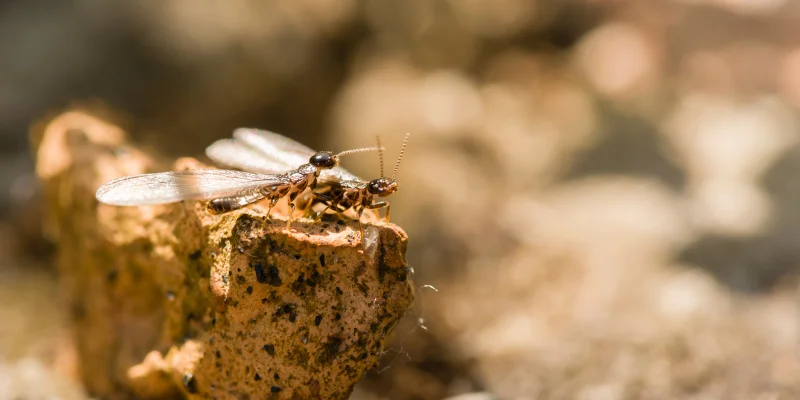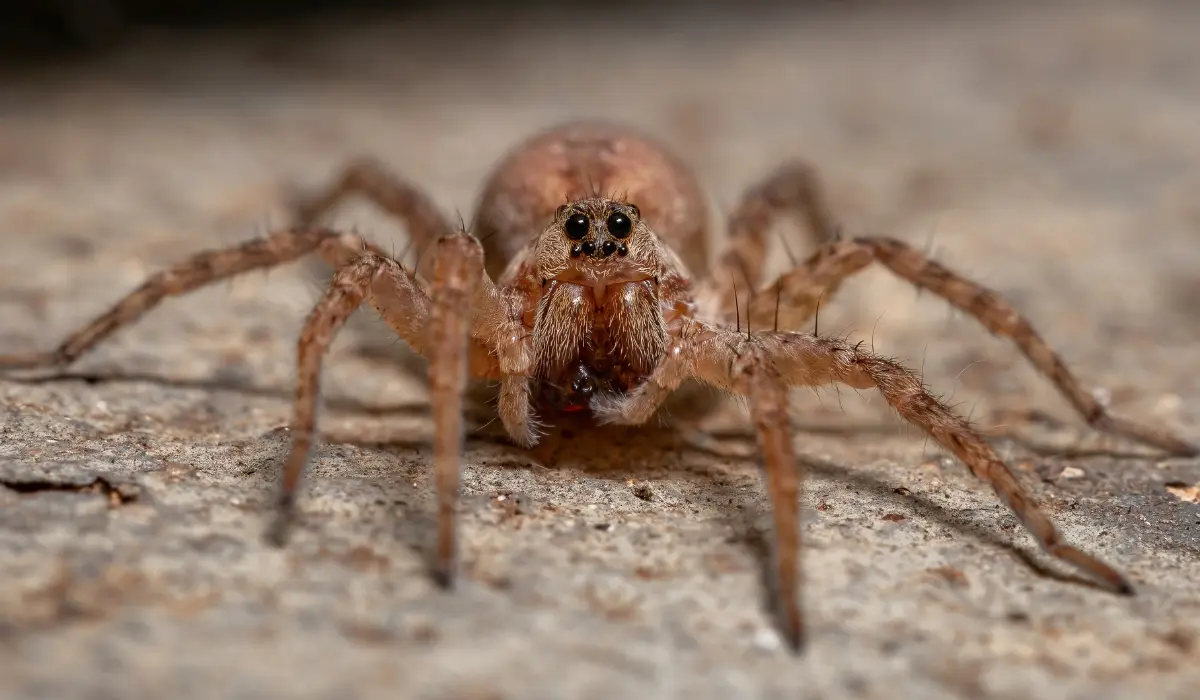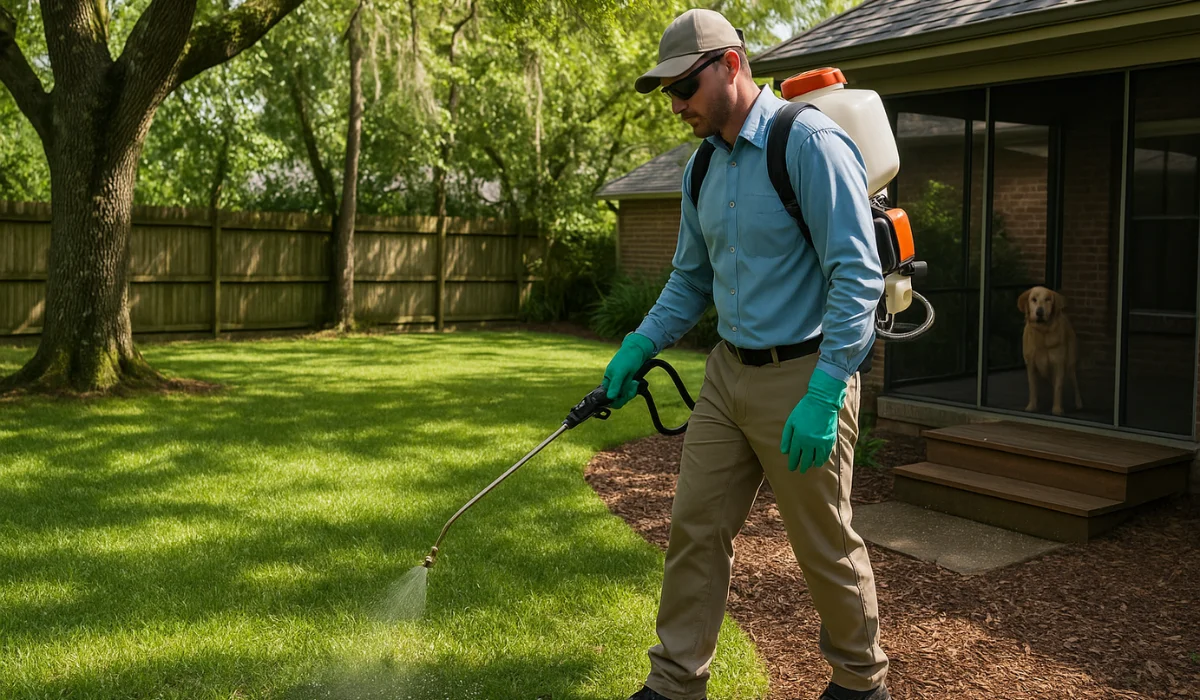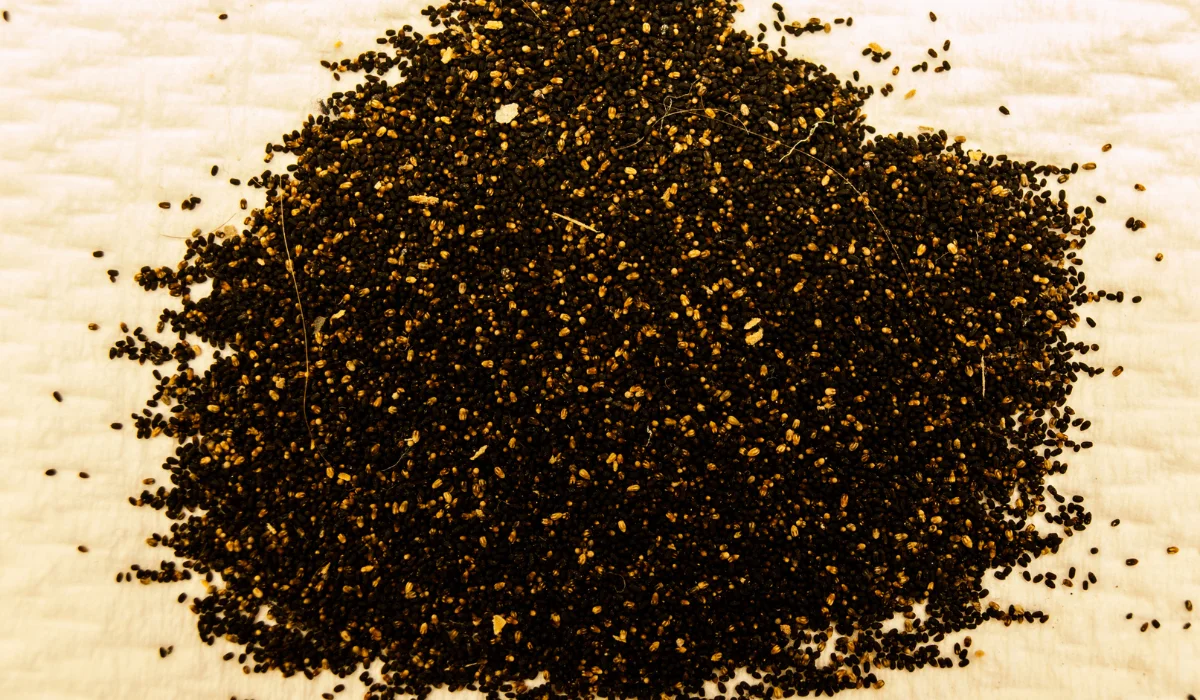In Louisiana, seeing flying termites means it’s swarming season, a time when termites look to start new colonies. This usually happens on warm, humid nights in spring after it rains.
These termites are more than annoying; they can seriously damage wood in homes and trees.
To keep your property safe, it’s important to understand how these flying termites operate and what to do about them.
Want to know how to protect your home from these pests? Stick around for some helpful tips.
Key Takeaways
- Identifying flying termites in Louisiana involves recognizing species like the Formosan subterranean and drywood termites, focusing on features like size, color, and swarming time.
- Flying termites differ from ants with straight antennae, a thick waist, and equally sized wings, signaling potential infestations.
- Louisiana’s humid climate and mild winters facilitate termite swarming, making monitoring for signs of infestation crucial.
- You can take preventative measures against termites using home remedies and professional control services, especially during peak swarming season.
IDENTIFYING FLYING TERMITES IN LOUISIANA
In Louisiana, identifying flying termites can help you prevent potential infestations.
Recognizing these termite swarmers involves knowing the common species in the area and understanding their life cycles and behaviors.
Termite Species Common in Louisiana
The region is home to several types of termite species, but the most prevalent are the Formosan subterranean termite, native subterranean termite, and drywood termite.
Here are key features to distinguish these flying termite species:
| Feature | Formosan Subterranean Termite | Eastern Subterranean Termite | Drywood Termite |
| Size | 1/2 inch | 3/8 inch | Up to 1 inch |
| Color | Yellow-brown / Pale | Dark brown / Black | Light brown / Tan |
| Wings | Long, translucent with veins | Long, translucent with veins | Long, two pairs |
| Time of Swarm | Late spring, early summer | Spring | Late summer, early fall |
| Origin | Asia | Indigenous to Louisiana | Coastal regions |
Unlike flying ants, flying termites have straight antennae, a thick waist, and wings of equal size.
Life Cycle and Behavior
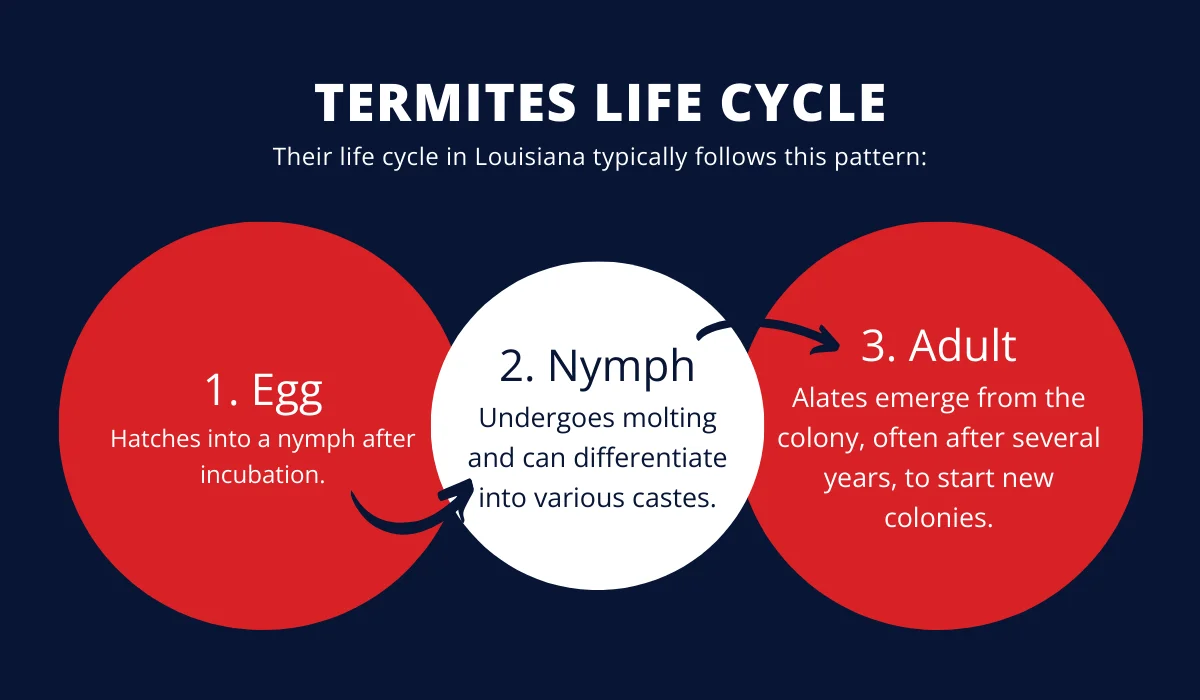
Termites have a complex life cycle that includes several stages. The flying termites you often see are adults ready to reproduce and build new termite colonies.
Their life cycle in Louisiana typically follows this pattern:
- Egg: Hatches into a nymph after incubation.
- Nymph: Undergoes molting and can differentiate into various castes, including workers, soldiers, or alates.
- Adult: Alates emerge from the colony, often after several years, to start new colonies.
WHY DO TERMITES SWARM IN LOUISIANA?
In Louisiana, termite swarming is deeply influenced by the local climate, with swarms often occurring around Mother’s Day due to specific weather patterns.
How Weather Affects Termite Activity
As you dive into understanding how weather impacts termite activity, consider the following table that breaks down key aspects of the termite season:
| Aspect | Description |
| Timing | The mild winters and humid springs create optimal conditions for swarming termites. |
| Moisture | The region’s high humidity sustains termite life and encourages swarming as termites seek new places to establish colonies. |
| Light Attraction | After World War II, housing and street lights expanded, increasing the visibility of termite swarms. |
SIGNS OF A FLYING TERMITE INFESTATION
As homeowners, detecting early signs of flying termite infestation is crucial to prevent extensive damage.
Being alert to physical symptoms of their presence and understanding the significance of swarming season in Louisiana can save much hassle and repair costs.
Physical Signs of Termites
Keep an eye out for these unmistakable signs of termite presence in your home:
- Drywood Termite Pellets: Discovering pellets on window sills can indicate drywood termite activity.
- Wood Damage: Damage to wood, often caused by drywood termites, is a telltale sign of infestation.
- Tiny Kickout Holes: Small holes in hardwood are created by drywood termites as they expel debris.
- Mud Tubes: Mud tubes on any interior wall signal termite pathways.
- White Winged Insects: Spotting these insects inside your home usually indicates a termite swarm.
- Honeycomb Indents: Honeycomb patterns in baseboards are indicative of termite activity.
- Splintering Wood Beams: Beams that appear splintered can often be attributed to termite damage.
Swarming Season in Louisiana
In Louisiana, the swarming season is a time of year crucial for monitoring termite colonies. This period usually peaks around May during Mother’s Day.
Here’s a swarming season checklist:
- Check for swarmers around lights, as termites are attracted to light.
- Inspect mud tubes along the home’s foundation—they are highways for termites accessing food sources.
- Remain vigilant for signs of termites around the house’s exterior, especially near any wood structures.
DIY TERMITE PREVENTION AND CONTROL
Taking proactive steps to prevent termites can save you significant trouble and expense.
Effective Home Remedies
Here are some actions you can take right now to safeguard your home against termite problems.
| Home Remedy | Recommended Action |
| Outdoor Lighting | Use sodium vapor bulbs for outdoor lighting and keep them away from doors and windows. |
| Crushed Rock Barrier | Create a barrier of at least 12-18 inches using crushed rock between your home’s foundation and any soil or mulch to deter termites. |
| Water Source Management | Actively work to eliminate standing water near your home and repair leaky pipes and fixtures. |
| AC Unit Maintenance | Repair leaky air conditioning units promptly to prevent water from pooling around your home’s foundation. |
| Landscaping Caution | Avoid over-planting shrubbery or mulch near your home’s foundation. |
| Structural Repairs | Address any damage to your home’s foundation, exterior walls, or roof promptly. |
| Wood and Debris Removal | Avoid damp or rotting wood and other debris that contain cellulose to attract termites outside your home. |
PROFESSIONAL TERMITE CONTROL IN LOUISIANA
As Louisiana residents, you often face a noteworthy challenge with flying termites, particularly during swarming season.
Professional Treatment Options
Termite control options in Louisiana include various methods.
To exterminate flying termites entirely from your home, you can check the following termite treatment options at LaJaunie’s:
- bait stations
- tent fumigation
- no-tent termite control
- termite trenching
- termite inspection
- termite pre-treatments
WHEN TO CALL A TERMITE PROFESSIONAL?
Oh, the heat and humidity of Louisiana—termites just love it! When your abode starts resembling a termite bed-and-breakfast, it’s time to roll up your sleeves and call in a pest control company.
Whether you’re in Baton Rouge or New Orleans, seeking expert help should be easy. For immediate intervention for a severe infestation, let Lajaunie’s termite control specialists tailor a solution that’s right for your home.
For more information about the areas we service, visit our location page.
 By: LaJaunie's Pest Control
By: LaJaunie's Pest Control 